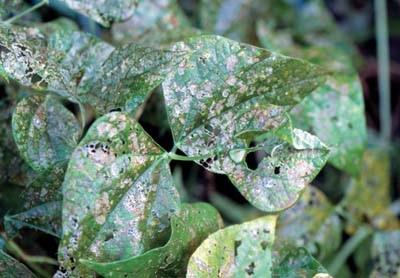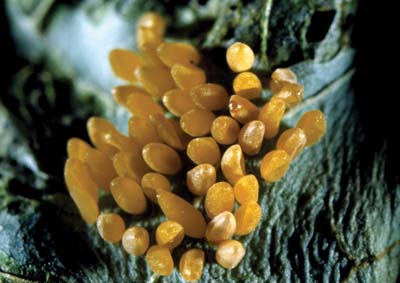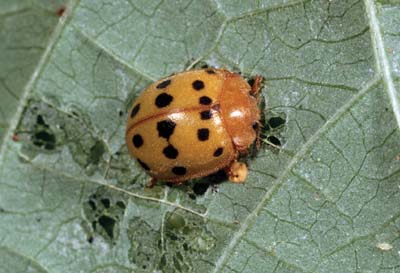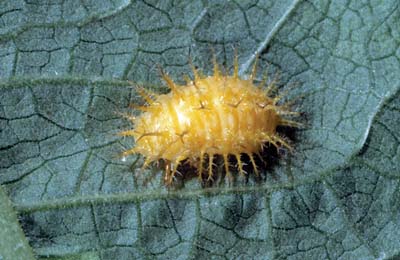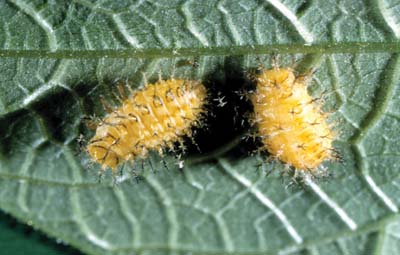Mexican Bean Beetle, Epilachna varivestis
(Coleoptera: Curculionidae)
The Mexican bean beetle is found in most states east of the Rocky Mountains and Mexico but is not common in Florida. Infestations are almost continuous with the pest being present wherever beans are grown. Eggs are pale yellow to orange yellow in color. At hatching, the larva is light yellow in color and the body is covered with rows of stout spines. The spines are yellow at first but later become darker in color. Once the larva is mature, it attaches itself to the leaf, stem or pod of the bean plant and then pupates. The pupa is yellow and spineless. The adult is oval in shape and is cream yellow. The adults darken with age and become an orange brown with a bronze tinge and usually have eight spots on each wing cover (elytra).
Lima bean and snap bean are the preferred hosts, but other hosts include cowpea, black-eyed pea, soybean, mungbean, velvetbean, alfalfa, and clover. Damage is done by both the larva and the adult due to their feeding on leaves, flowers and growing pods of the bean plant. They scrape away the tissue, causing scars. The larvae are usually responsible for the majority of the injury to the plant. Crops should be sampled to determine the presence of beetles. Cultural control methods include destruction of crop residue, the use of trap crops, and the destruction of overwintering locations or alternate hosts. Biological control may also be used to control Mexican bean beetle populations. Resistant varieties may also be used but complete resistance has not been found. Insecticides are commonly used and some systemic insecticides may provide control up to 70 days when applied at planting or as a side dress treatment during mid-season cultivation.
Images
To save the Web-optimized images shown below to your hard drive:
PC users: right click to "Save Picture (or Image) As..."
Mac users: click and drag to your desktop.
Copyright © 2005 University of Florida
